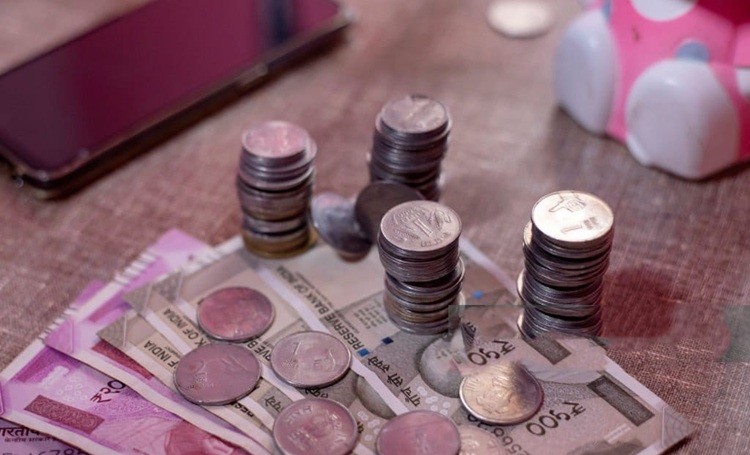On October 1, 2025, the Reserve Bank of India (RBI) unveiled a historic set of measures aimed at accelerating the internationalization of the Indian Rupee, marking a decisive step in the nation’s long pursuit of reducing dependence on the US dollar and strengthening its role in global trade.
Announced by Governor Sanjay Malhotra during the Monetary Policy Committee meeting, the measures reflected both India’s growing confidence in its economic fundamentals and its ambition to reshape the contours of international finance.
The announcement, which comes against the backdrop of a GDP growth rate of 7.8 percent in the first quarter of 2025–26 and robust foreign exchange reserves of over USD 700 billion, signals India’s readiness to let its currency cross borders in ways never seen before.
The measures are three-pronged. First, authorized dealer banks have been allowed to extend loans in Indian Rupees to non-residents from Bhutan, Nepal, and Sri Lanka for trade-related transactions.
This may appear limited in scope but is strategically significant because nearly 90 percent of India’s exports to South Asia in 2024–25, worth about USD 25 billion, were directed to these very economies.
Second, the RBI has announced its intent to create transparent reference rates for currencies of major trading partners beyond the familiar quartet of USD, EUR, GBP, and JPY, with the Indonesian Rupiah and UAE Dirham already under consideration.
This would simplify trade invoicing and settlement by removing the inefficiency of multiple currency conversions.
Third, Special Rupee Vostro Accounts (SRVAs), which were earlier restricted to investments in government securities, can now be deployed for corporate bonds and commercial papers, opening wider investment avenues for foreign entities holding rupee balances. T
aken together, these measures reflect a pragmatic yet ambitious roadmap to expand the global footprint of the rupee.
The immediate positive impact of these steps will be felt in reduced transaction costs and lower currency risk.
For Indian exporters and importers engaged in trade with neighbouring countries, bypassing the US dollar in settlements will save money and time, making Indian goods more competitively priced and improving predictability in financial planning.
By cutting out the dollar conversion step, Indian companies stand to benefit from efficiency gains that will likely ripple into consumer prices and investment flows. The expansion of SRVA investments means foreign banks and businesses holding rupee balances now have the incentive to remain invested in India rather than rushing to liquidate holdings, thereby deepening domestic bond markets and strengthening India’s financial ecosystem.
In the longer term, the advantages are more profound.
The move enhances India’s monetary sovereignty, reducing dependence on the policies of external central banks, particularly the US Federal Reserve, whose interest rate decisions often ripple through Indian markets in destabilizing ways.
International use of the rupee also increases its global demand, adding stability and credibility to the currency.
Geopolitically, the initiative gives India a tool to insulate itself and its partners from sanctions or disruptions in the US-dominated financial architecture, thereby offering alternative pathways for trade with countries often excluded from the dollar system.
The timing is astute, given the rising demand for de-dollarization in many parts of the world, particularly among nations seeking to diversify away from the vulnerabilities of a unipolar financial order.
However, the challenges cannot be understated. The global acceptance of the rupee is still limited, and most countries outside South Asia remain more comfortable trading in dollars, euros, or yuan.
Widespread adoption of the rupee will require trust in India’s economic stability, consistent regulatory clarity, and deep liquidity in rupee-denominated instruments.
Exchange rate volatility is another concern; as the rupee expands its international role, fluctuations could increase, creating uncertainty for both Indian businesses and foreign partners.
India’s robust foreign exchange reserves provide a buffer, but over the long run, stability must come from economic fundamentals rather than intervention.
There is also the risk of overstretching.
If rupee internationalization is pushed too fast without the necessary financial infrastructure—such as broader offshore markets, inclusion in global settlement systems, and efficient cross-border payment mechanisms—the experiment could backfire.
The Indian example is not without precedent. China’s careful internationalization of the Renminbi, which relied on bilateral currency swap agreements and the establishment of offshore markets, provides a useful model.
India, however, appears to be taking an evolutionary rather than revolutionary path.
By starting with neighbouring economies, creating new reference rates, and cautiously expanding the utility of SRVAs, the RBI is prioritizing financial stability while pursuing global ambition.
This calibrated approach aligns with successful past examples such as the euro and yen, where gradual trust-building and infrastructure creation laid the foundation for eventual acceptance as international currencies.
For Indian exporters, the new framework brings tangible relief.
Extended repatriation periods for funds in International Financial Services Centre accounts and longer forex outlay periods for merchanting trade transactions provide much-needed flexibility.
The creation of transparent reference rates for new partner currencies reduces hedging costs, directly boosting profitability. Indian banks, too, stand to benefit, as cross-border lending in rupees opens new avenues of business in South Asia and helps expand India’s natural sphere of economic influence.
Over time, this could evolve into a regional currency bloc anchored by the rupee, reinforcing India’s leadership role in South Asian integration.
The way forward must involve sustained infrastructure development.
India will need to strengthen its payment systems for international transactions, integrate with global settlement platforms like the Continuous Linked Settlement system, and develop deeper offshore rupee markets to ensure adequate liquidity.
Strategic partnerships will also be critical. Expanding arrangements beyond South Asia to include Southeast Asia, the Middle East, and Africa would broaden the rupee’s acceptance, leveraging India’s growing trade volumes with these regions.
Regulatory frameworks must evolve in tandem, with rationalized foreign exchange management and external borrowing norms that encourage international participation without jeopardizing financial stability.
Projections suggest that in the short term, rupee-denominated trade with South Asian neighbours could increase by 15 to 20 percent, adding up to USD 1 billion in additional exports.
In the medium term, within three to five years, rupee-based trade could account for up to 15 percent of India’s total trade, contributing to a significant reduction in the current account deficit.
The long-term vision, over the next decade, is more ambitious: the rupee emerging not just as a regional but as a global reserve currency, providing India with both prestige and material benefits, including seigniorage gains and greater independence in monetary policy.
India’s journey toward rupee internationalization is not merely an economic policy adjustment; it is a statement of intent on the global stage.
It signals that the world’s fifth-largest economy is ready to assert its financial sovereignty and carve out space in an arena long dominated by a single currency.
ALSO READ: Body of seven-year-old recovered in Shillong; murder suspected
While the challenges are real and the path will be long, the foundations are being laid carefully, combining pragmatism with vision.
For India, this is not just about the mechanics of trade settlements but about shaping its destiny as a global power with an independent economic identity.
The October 1 announcement by the RBI is therefore more than a monetary reform; it is a milestone in India’s evolution as a shaper of global economic norms.
If pursued with persistence and foresight, this move will not only strengthen India’s own position but also serve as an inspiration for other nations to imagine alternatives to the dollar-dominated system.
In doing so, it will contribute to the slow but steady shift of the world order from unipolar to multipolar, redefining the balance of power in the global economy.















